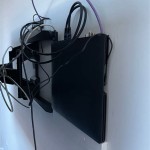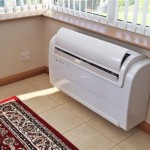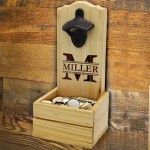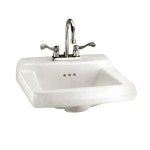Oscillating Fan Wall Mount Brackets: A Comprehensive Guide
Oscillating fans are a ubiquitous solution for providing localized airflow and temperature regulation in a variety of settings. From residential spaces to commercial establishments and industrial environments, these devices offer a cost-effective and energy-efficient way to improve air circulation. While many oscillating fans are designed for floor or table placement, a wall mount bracket provides a compelling alternative, maximizing space efficiency and offering greater control over airflow direction.
The use of an oscillating fan wall mount bracket involves several considerations, encompassing bracket selection, installation procedures, fan compatibility, and maintenance requirements. This article serves as a comprehensive guide to these aspects, providing detailed information to facilitate informed decision-making and proper implementation.
Understanding the Benefits of Wall-Mounted Oscillating Fans
Choosing to mount an oscillating fan on a wall using a specialized bracket offers several distinct advantages over traditional floor or table-standing models. These benefits contribute to improved space utilization, optimized airflow, and enhanced safety.
One of the primary benefits is space saving. In confined spaces, such as small apartments, workshops, or offices, floor space is often at a premium. By mounting the fan on the wall, valuable floor area is freed up, allowing for greater mobility and more efficient use of the available space. This is particularly advantageous in environments where equipment or furniture occupies a significant portion of the floor.
Improved airflow control is another crucial advantage. Wall-mounted fans allow for precise adjustment of the airflow direction. By positioning the fan higher on the wall, airflow can be directed downward, circulating air more effectively throughout the room, especially in areas where warm air tends to accumulate near the ceiling. This is particularly beneficial in rooms with high ceilings or areas prone to temperature stratification.
Safety is also a significant consideration. Floor-standing fans can be easily tipped over, posing a safety hazard, particularly in households with children or pets. Wall-mounted fans eliminate this risk by securing the fan firmly to the wall, preventing accidental falls and potential injuries. This feature also makes them ideal for use in environments where stability is paramount, such as laboratories or manufacturing facilities.
Finally, wall-mounted fans often offer increased longevity. By being mounted away from floor-level dust and debris, the fan motor and components are less susceptible to accumulating dust and other contaminants, which can lead to overheating and premature wear. This can translate to a longer lifespan for the fan and reduced maintenance requirements.
Selecting the Right Oscillating Fan Wall Mount Bracket
Choosing the appropriate wall mount bracket is a critical step in ensuring the safe and effective operation of the oscillating fan. Several factors should be taken into consideration when selecting a bracket, including the fan's weight and size, the wall's construction, and the desired range of motion.
The first and most crucial factor is weight capacity. The bracket must be able to safely support the weight of the oscillating fan. Exceeding the bracket's weight limit can lead to failure, potentially causing damage to the fan, the wall, and posing a safety hazard. Always consult the manufacturer's specifications for both the fan and the bracket to ensure compatibility. Select a bracket with a weight capacity that exceeds the fan's weight to provide an extra margin of safety.
Wall construction is another important consideration. Different wall types, such as drywall, plaster, concrete, or brick, require different types of mounting hardware. Drywall, for example, requires the use of anchors to provide sufficient support. Heavier fans may necessitate mounting directly to wall studs for maximum stability. Concrete or brick walls typically require the use of masonry anchors. It is essential to understand the wall's construction and select the appropriate mounting hardware accordingly.
The desired range of motion also influences bracket selection. Some brackets offer limited adjustability, allowing for only a fixed position or a slight tilt. Others provide a greater degree of freedom, allowing for full swivel and tilt adjustments. Consider the specific needs of the application and choose a bracket that offers the desired range of motion to optimize airflow direction.
Material and construction of the bracket are also important. Brackets constructed from durable materials, such as steel or heavy-duty aluminum, are more resistant to wear and tear and can provide a more secure mounting solution. Look for brackets with a rust-resistant finish to ensure long-term durability, especially in humid environments.
Finally, consider the ease of installation. Some brackets are designed for quick and easy installation, while others may require more specialized tools or expertise. Look for brackets that come with clear and concise instructions and all the necessary mounting hardware. If unsure, consider consulting a professional installer.
Installation Procedures for Oscillating Fan Wall Mount Brackets
Proper installation of the wall mount bracket is essential for ensuring the safe and effective operation of the oscillating fan. Incorrect installation can lead to the bracket becoming loose, potentially causing the fan to fall and resulting in damage or injury. The following steps outline a general installation procedure, but it is crucial to consult the manufacturer's instructions for specific guidance.
The first step is to identify the optimal mounting location. Consider the desired airflow direction, the proximity to electrical outlets, and the presence of any obstructions. Ensure that the selected location provides sufficient clearance for the fan to oscillate freely. Use a stud finder to locate wall studs if mounting to drywall, as securing the bracket to a stud will provide the strongest and most secure mount. Mark the desired mounting location with a pencil.
Next, use a level to ensure that the bracket is mounted horizontally. An unlevel bracket can cause the fan to oscillate unevenly and may eventually lead to the bracket becoming loose. Use a pencil to mark the locations for the mounting holes, using the bracket as a template.
Drill pilot holes at the marked locations using a drill bit that is appropriate for the wall material. For drywall, use drywall anchors to provide secure mounting points. For concrete or brick, use masonry drill bits and masonry anchors. If mounting to a wall stud, pre-drilling is often not necessary. Insert the appropriate anchors into the pilot holes.
Attach the bracket to the wall using screws or bolts. Ensure that the screws or bolts are long enough to penetrate the wall and securely engage the anchors or wall studs. Tighten the screws or bolts firmly, but avoid over-tightening, which can damage the wall or the bracket. Verify that the bracket is securely mounted and does not wobble.
Once the bracket is securely mounted, attach the oscillating fan to the bracket according to the fan manufacturer's instructions. Ensure that the fan is properly aligned and securely fastened to the bracket. Double-check that all connections are tight and that the fan is stable.
Finally, plug the fan into an electrical outlet and test its operation. Verify that the fan oscillates smoothly and that the airflow is directed as desired. Make any necessary adjustments to the fan's position or oscillation settings.
It is crucial to emphasize that electrical work should only be performed by qualified individuals or licensed electricians. Improper wiring can lead to electric shock, fire hazards, and serious injuries. If unsure about any aspect of the installation process, consult a professional.
Maintenance and Safety Considerations
Proper maintenance and adherence to safety guidelines are essential for ensuring the long-term performance and safe operation of the wall-mounted oscillating fan. Regular cleaning and inspection can help prevent malfunctions and prolong the life of the fan.
Regular cleaning is crucial for maintaining optimal performance. Dust and debris can accumulate on the fan blades, motor, and grill, reducing airflow and potentially causing overheating. To clean the fan, first unplug it from the electrical outlet. Use a soft cloth or brush to remove dust and debris from the blades, motor, and grill. For stubborn dirt or grime, a mild detergent solution can be used. Ensure that all parts are thoroughly dry before reassembling the fan.
Periodically inspect the bracket and mounting hardware for any signs of wear or damage. Check for loose screws or bolts, cracks in the bracket, or corrosion. If any issues are detected, tighten the screws or bolts, replace the damaged parts, or consult a professional for repairs.
Ensure that the fan is properly grounded to prevent electrical shock. Check the power cord for any signs of damage, such as frayed wires or cracked insulation. If the power cord is damaged, replace it immediately.
Avoid overloading electrical circuits. Do not plug the fan into an outlet that is already heavily loaded with other appliances. Overloading circuits can lead to overheating and potentially cause a fire.
Keep the fan away from flammable materials, such as curtains, drapes, or paper. Ensure that there is adequate clearance around the fan to prevent overheating or fire hazards.
Never insert objects into the fan while it is operating. This can damage the fan blades and potentially cause injury.
Disconnect the fan from the power outlet before performing any maintenance or repairs. This will prevent accidental electric shock.
By following these maintenance and safety guidelines, ensure the safe and efficient operation of the oscillating fan and prolong its lifespan.

Hampton Bay 24 In 3 Speed Oscillating High Velocity Black Wall Mount Fan With Blades 82024

Boltic 24 Wall Mounted 2 Speed Oscillating Fan 5 800 7 250 Cfm 120v

Hampton Bay 24 In 3 Speed Oscillating High Velocity Black Wall Mount Fan With Blades 82024

Wall Fan Bracket Hooks Oscillating Electric Mount Accessories Universal Steel

Hampton Bay 24 In 3 Speed Oscillating High Velocity Black Wall Mount Fan With Blades 82024

Tornado Fans Bracket Base Of 16 Pro Series Metal Oscillating Wall Fan

Zoele Wall Fan Mounting Bracket Oscillating Supports Rack Os

Wall Fan Bracket Hooks Oscillating Electric Mount Accessories Universal Steel

Hurricane Replacement Wall Mount Bracket For Part 736503

Vevor Wall Mount Fan 20 Inch 3 Speed High Velocity Max 4650 Cfm Oscillating Or Residential For Warehouse








